Let’s talk...
About plot: We can observe the details of the illustrations, and encourage our child to describe them, follow the events, and make connections. We notice changes in the sea scene, the girl, and the birds, describing the girl’s feelings each time.
About personal experiences: Have we experienced similar feelings? How and when? We can recall our journeys, adventures, moments, and various experiences.
About seas and nature: What does the sea remind us of? Which seas have we visited? What other natural places do we know? We can compare them: how are they similar or different?
Let’s enrich our Language...
Description and comparison: We can describe the girl’s features and the feelings she expresses. We can compare them in each scene.
Birds: We can pay attention to the birds in the drawings, think about their relationship with the girl, and learn about their characteristics and advantages.
Names: We can suggest a name for the girl, think about our own names, who gave them to us? We try to remember the stories and meanings behind our names.
Actions: We can observe the girl’s movements and name them. We can also perform similar actions.
Let’s explore...
Seas: we can visit a nearby sea, look at the sunset or sunrise, observe the waves, and enjoy the beach sand. We can look for scientific information: How are waves formed? What marine life lives in the sea and what distinguishes them?
Nature: We can choose a natural place for a shared We can visit it, appreciate its details, listen to the sounds, get to know the creatures, describe and play together. We may search the internet and encyclopaedias for information about the place before or after the visit.
Let’s create...
Paintings of nature: we can collect materials from nature during our outing and create paintings to decorate our home. (Paintings from seashells, mountain stones, or garden leaves).
Our book: we can document our moments with pictures and compile them into a book for the story of our enjoyable journey. What do we want to add to it?
Let’s talk...
About the title: We can ask the children what is meant by “nothing” in the gift box?
About the meaning and value of the gift: We can talk about the meaning of the gift, asking our children: Why do you think the cat wanted to give the dog a gift? Is it important for us to give each other gifts? How do we feel when we receive a gift?
About ways of expressing love: The gift is often a way of expressing love. We can ask our children: How can we express our feelings, such as love, appreciation, and concern for friends and family in ways other than giving material gifts?
About Drawings: The drawings in this book have a “comic” style. We can explore with our children where this style is used to convey information or tell a story (such as advertisements, children’s magazines, etc.).
Let's create...
We can think about a special person in the child’s life whose birthday is coming up, and we can prepare a special gift for them, such as a photo album of beautiful moments spent together, a photo frame, a card expressing our love, creatively wrapped.
Let’s enrich our language...
“Nothing” is a commonly used term in our colloquial language, as in the story, and is often used metaphorically. We can follow different situations in the story, replacing the term “nothing” with a detailed sentence expressing the situation, and encourage our children to express themselves.
Let’s talk...
About desires: The little owl understands what he likes, such as sledding, eating ice cream, and adding numbers. We can talk to our child about the things they like and want to do.
About expressing feelings: The little owl tried various ways to get rid of the scarf. We can ask our child why he did that and suggest alternative ways to express dissatisfaction or displeasure to parents.
About participating in decision-making and choices: The owl mother decided to involve her child in choosing the scarf he wants. We can talk to our children about situations where they participate in decision-making, such as choosing clothes, toys, household chores, and situations where they don’t participate in making choices. Ask them: How do you feel? How would you like us to act?
Let’s communicate...
We can spend some quality time with our child on a nature walk or a trip to a nature reserve, like Al Hula Reserve, where we can learn about different bird species, especially during their migration season.- The owl mother knitted the scarf for her child. We can enjoy preparing a product with our child, like making an owl doll from old clothes.
Let’s enrich our language...
The little owl accurately expressed his dislike for the scarf using appropriate adjectives. We can play a guessing game with our children, saying, for example, “I see something tall, green in color…” and let the child guess. We ensure the use of precise qualities for the item or thing that our child will understand.
Let’s act out and create...
Let’s talk to our child about situations where they feel frustration or anger. The scenario helps us think together about ways to alleviate their feelings and use appropriate social expressions.
Let’s talk...
About feeling confused: With our child, we can discuss the mixed feelings of the monster. We can ask them: Why do you think the color monster woke up confused and excited? Have you ever felt this way?
About colors and feelings: The color monster chose a color that embodies her feelings every time. We can have a conversation with our child about colors and feelings and we can ask them: Which colors represent your feeling of joy? anger? Sorrow? What do you do when you feel this emotion?
About the connection between feelings and behaviour: With our child, we can have a dialogue and ask them: What changes in your body when you feel happy? angry? nervous? frightened? What do you do when you feel these emotions?
About the feeling of love: We can look at the drawings on the last page and search for an embodiment of the meaning of love. We can talk to our child and ask them: How do we feel that we are loved?
Let’s enrich our Language...
The book is rich in emotional vocabulary, which we may not use in the context of our spoken language. This generally limits our ability to express our feelings and even our awareness of them. We can include the use of emotional vocabulary in our daily lives to enrich our child’s ability to be aware and express feelings.
Let’s create...
We can prepare a jar of feelings with our children, and we can include it as a ritual in our daily schedule, so that every day we can choose colorful cards that embody our feelings during the day: I felt happy when… I felt angry when… I felt nervous when… Then we can discuss those feelings together.
The drawings in this book adopt the technique of collage. By using scraps of paper and newspaper, we can prepare various faces and paintings with our children. These could be funny, happy, sad, or angry.
Let’s communicate...
With our child, we can choose a daily “meditation” ritual that helps us relax, be aware and listen to our feelings, and relieve stress when we are angry or afraid.
We can chat...
We can chat with our child about things that make them afraid. We can encourage them to talk about everything: What exactly frightens them, and which feelings do they experience physically at that moment?
People differ in...
People differ in their physical reactions in situations of fear, some of them become irritable, sweat and feel hot, and others feel paralyzed, or they may feel cold. It may be helpful to share what scares us with our child, and how we physically feel in moments of fear.
What can help...
What can help us relieve our fear in each situation? Together, we can think of practical ways that suit our child’s abilities, such as asking for help, breathing deeply, or turning to someone they trust.
Often, when we...
Often, when we materialize the source of our fear, we feel that we are in control of it, and this reduces the severity of its impact on us. We can encourage our child to draw what they are afraid of, or to shape it with playdough.
We follow Tarek’s...
We follow Tarek’s ego bag that he carries throughout the story: does its size and color change in the course of the book? What about all its different shapes?
We talk to our child...
We talk to our child about our invisible bag that we carry sometimes on our back when we feel stressed or sad. When do we feel the heaviness of the bag? What might help us to relieve the heaviness?
Our child might enjoy...
Our child might enjoy a conversation about things he likes to do alone and the other things that he likes to share with people.
Burden bag...
“Burden bag, and happiness bag” game! We give each family member two bags one for the things that burden them and one for the happy things. Burdens can be heavy things like blocks or kitchen utensils, while happy things can be balloon or feathers. This is a good occasion for the family to hear about each other’s burdens and happiness and find ways to support each other.
This author/illustrator is...
This author/illustrator is known for her use of black and white colors. We can think together why she chose to use those two colors adding a little bit of red.
Talk with your child...
Talk with your child about an enjoyable activity that he/she likes to do with other children, and one that is unique for him/her. You might want to share with him/her an activity that you enjoy.
Rabbity disappears suddenly...
Rabbity disappears suddenly. Discuss what might have happened to him, and what did this make his friends feel.
The absence of...
The absence of a dear person from a child’s life can be a difficult emotional experience, but one that each child goes through as part of life. This book might arouse painful memories and feelings for loosing someone dear. But it’s an opportunity to encourage your child to express feelings of sadness, anger, as part of positively dealing with loss.
Rabbity left his...
Rabbity left his colors and musical instruments for his friends to enjoy, create and remember him in joy. You might want to collect with your child nice memories of a dear person: A picture album, a book about funny memories that you can help your child write and illustrate.
“Family hobbies day”!...
“Family hobbies day”! Where each one invites others to share a favorite activity.
The illustrator plays...
The illustrator plays with paint spots to do the illustrations. Your child will enjoy blowing with a straw on a small amount of paint on a paper, to get a colorful painting or a background for his/her drawings.
Dry leaves in...
Dry leaves in a closed plastic bag, or dry peas in a closed yogurt container can make wonderful musical instruments to enjoy making a concert with your child!
We can read...
We can read the title “My Cheek is Like a Rose” and have a conversation about it: what is similar between the cheek and the rose? We can encourage children to think about different things which are similar to their cheeks, and cheeks of other family members.
We should read...
We should read the poem slowly, in order to help him understand the words and to notice the rhythm, and we can have a conversation about the poem and its characteristics (the rhythm, short sentences).
We can draw...
We can draw two children, happy and sad children, and then to cut them and try to encourage the child to express himself regarding these two children by using verbs such as I love, I hate, I’m afraid, I ask.
Some sentences don't...
Some sentences don’t really express the child’s feeling, such as the sentence “when my grandpa died”. We can have a conversation about the child’s feeling when someone dear dies.
The connection between...
The connection between the text and the illustrations is not always clear, sometimes it directly describes the text, but sometimes the drawings describe the text using metaphors. The illustrator adds colors to express positive or negative feelings according to the text. We can have a conversation with our child about the illustrations and what meanings do they contain.
We can read...
We can read the title and talk to our children about what they consider their most precious present: What characterizes it? Also, we can have a conversation with our children regarding the good and the positive feelings which we feel, which people in general and children in specific feel, when we get a present.
Little bear found...
Little bear found several presents. We can follow his presents, and ask our children, what happened to these presents? What other presents could he have found during his trip?
We can think...
We can think of someone that our child loves, who has a birthday, and try to think together how can we chose a present for her/him.
Little bear tells...
Little bear tells us that the precious presents are not the expensive ones, but those that we really love and admire. It is important to encourage our children to make their presents for people they hold dear. We only need to bring them simple materials, and spend nice time with them making their presents.
In general...
In general, a present symbolize love. What diverse ways – other than presents – we can express our love to people?
Not only does...
Not only does little bear grandma’s get a present, but little bear himself and his father get a most wonderful present as well: such as, having a wonderful time together playing, talking, and discovering the beauty of nature in different seasons. What do you think about experiencing a similar trip with your children?
We can consider...
We can consider the angry expressions in the little octopus’s family and see if the expressions look similar to ones of our family member?
We can play...
We can play with our child the game “angry bodies”, posing in front of the mirror with various expressions. What do we feel with our bodies?
The octopus’s family...
The octopus’s family members are father, mother, brother, sister, grandfather and grandmother. We can think together, why are they angry? are there more members we can add to the family, and think of the reason for their anger? This is an opportunity to listen for the child and for the things that make him angry, and also an opportunity to express for him the things that make parents angry.
Each member...
Each member of the family deals with his anger in different way, there are who shout, break, hit, isolate themselves or work out to release anger. We can have a conversation with our child about things that make him angry (such as, when his little brother or sister takes him toys). We act his angry reaction, and talk about it. Think of ways to control the anger (take a deep breath several times, count to 10, or go out to garden to jump and run).
Imagine things...
Imagine things around us, or in nature, that look like us when we get angry (such as a volcano, or a kettle).
What do you think...
What do you think about making a photo album for the family, and call it “what do we do when we are angry in the family”? we can also share the child drawing the family members with angry expressions.
Happiness is the opposite...
Happiness is the opposite of anger. What makes us happy? How does each one of the family members express his happiness?
In general...
In general, we express our anger with loud voice, but the illustrator chose to draw an angry family using a silent sea fish. Why? How does our child explain this.
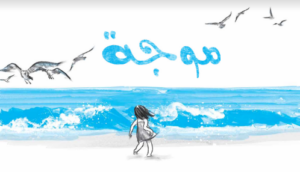 Wave
Wave 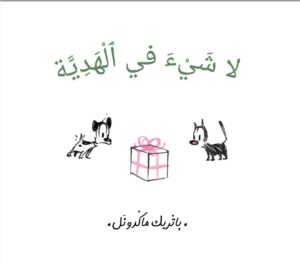 The Gift of Nothing
The Gift of Nothing 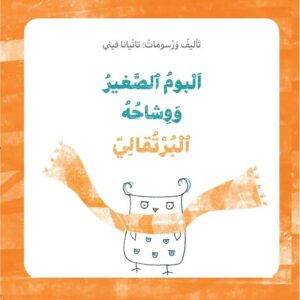 The Small Owl and his Orange Scarf
The Small Owl and his Orange Scarf 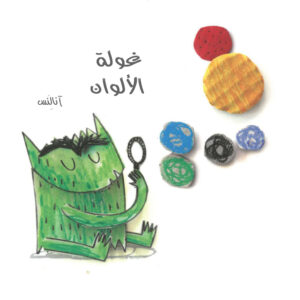 The Color Monster
The Color Monster 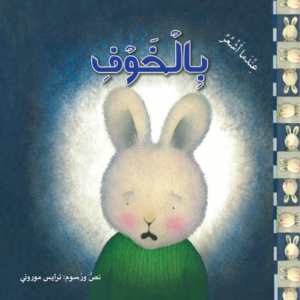 When I’m feeling scared
When I’m feeling scared 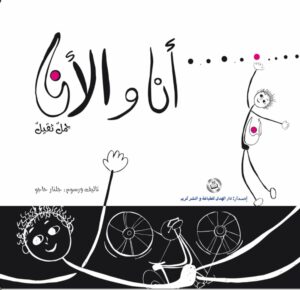 It’s Not Easy to Be Me
It’s Not Easy to Be Me 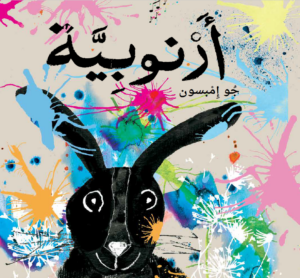 Rabbityness
Rabbityness 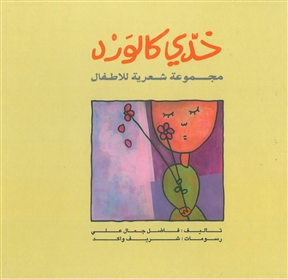 My Cheek is Like A Rose
My Cheek is Like A Rose 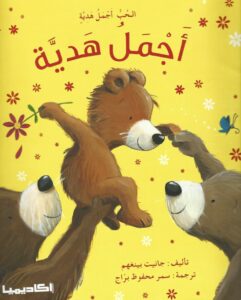 The Best Present
The Best Present 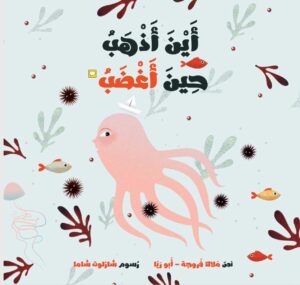 Where Do I Go When I’m Angry
Where Do I Go When I’m Angry 
